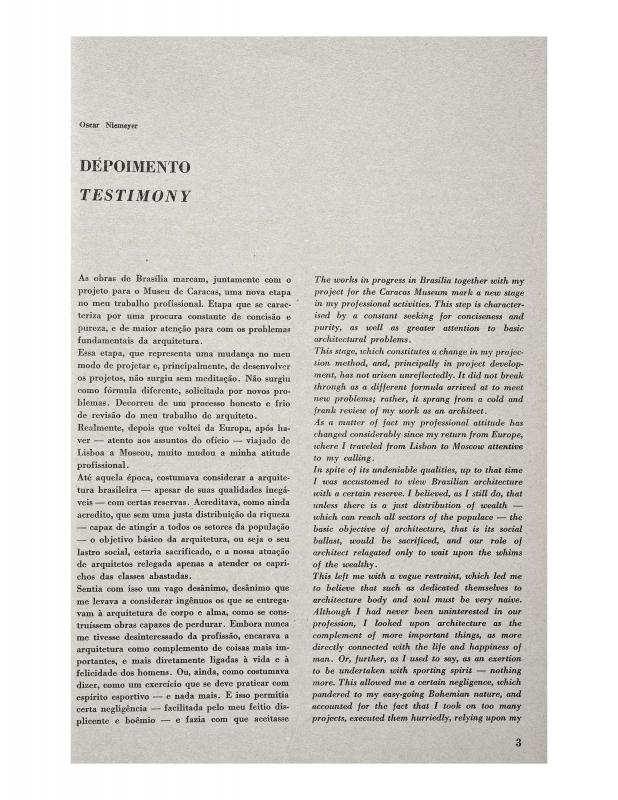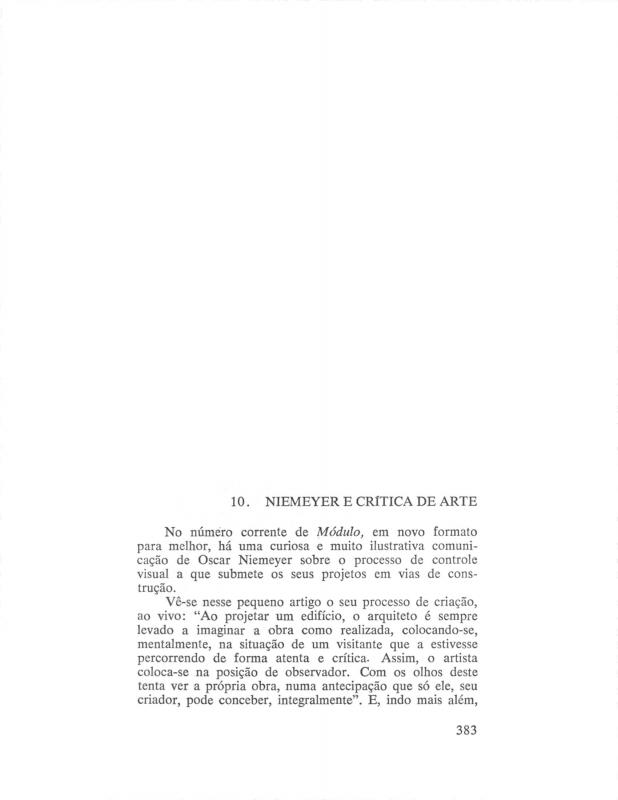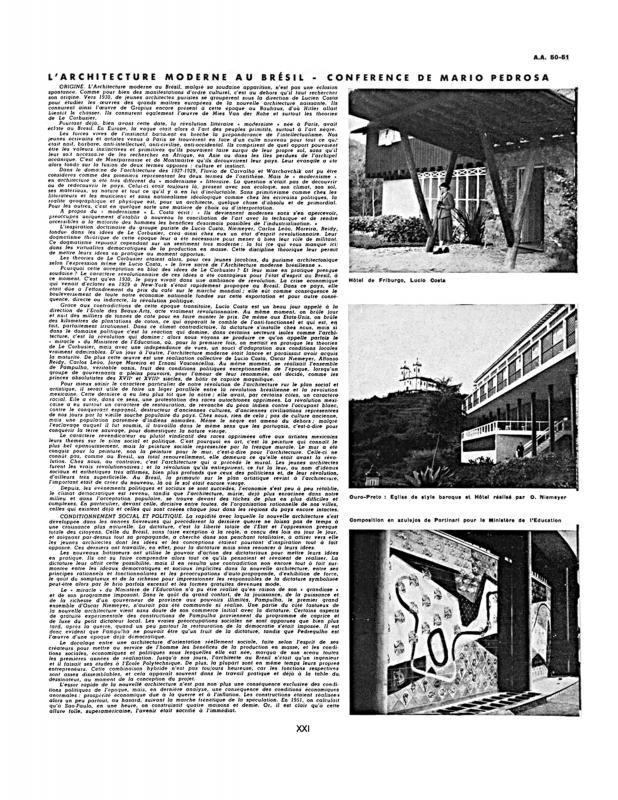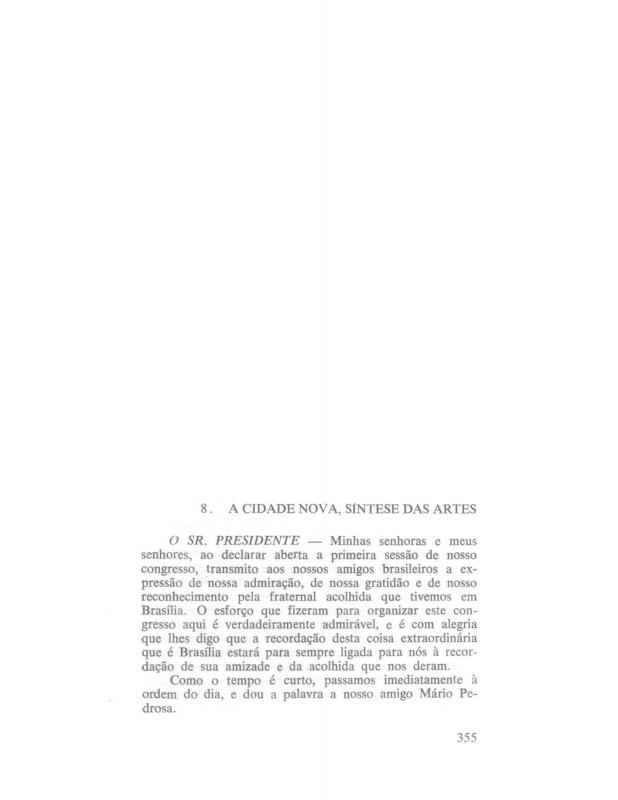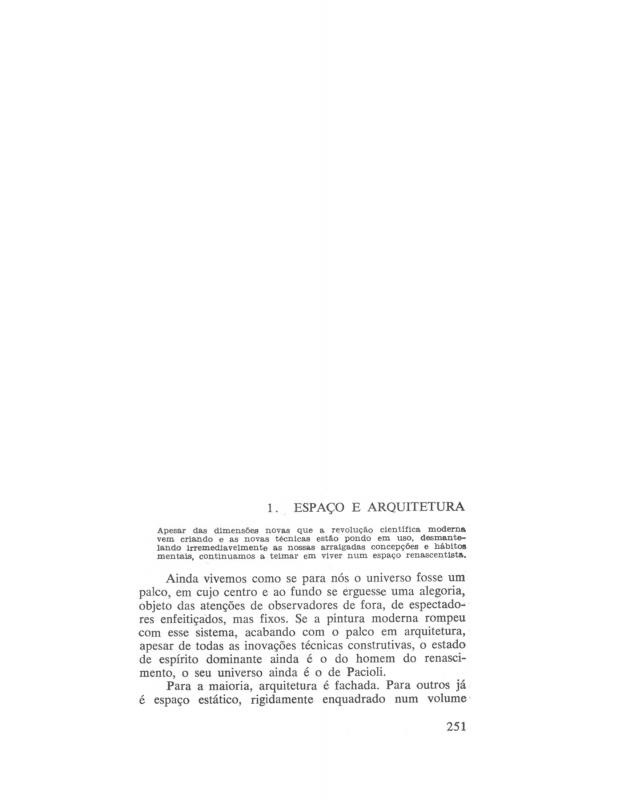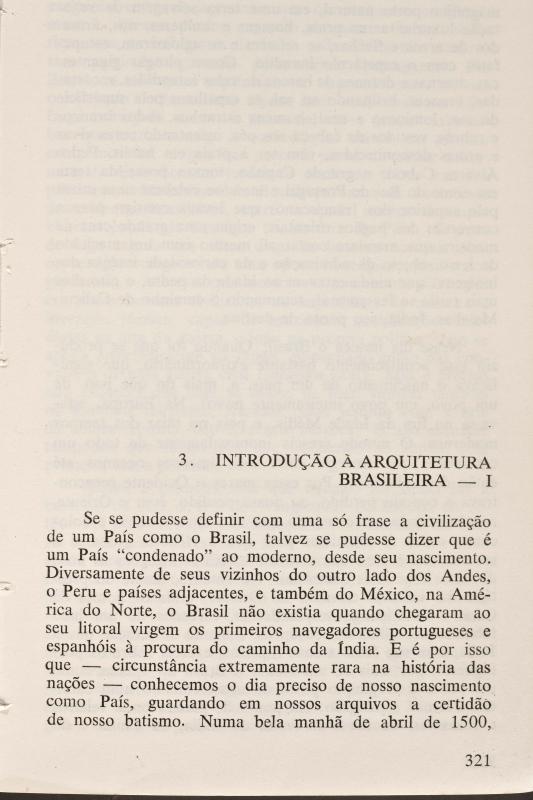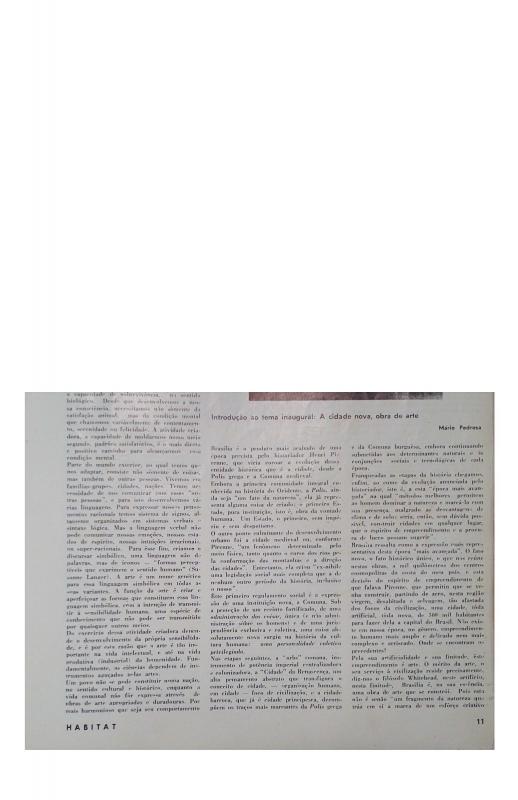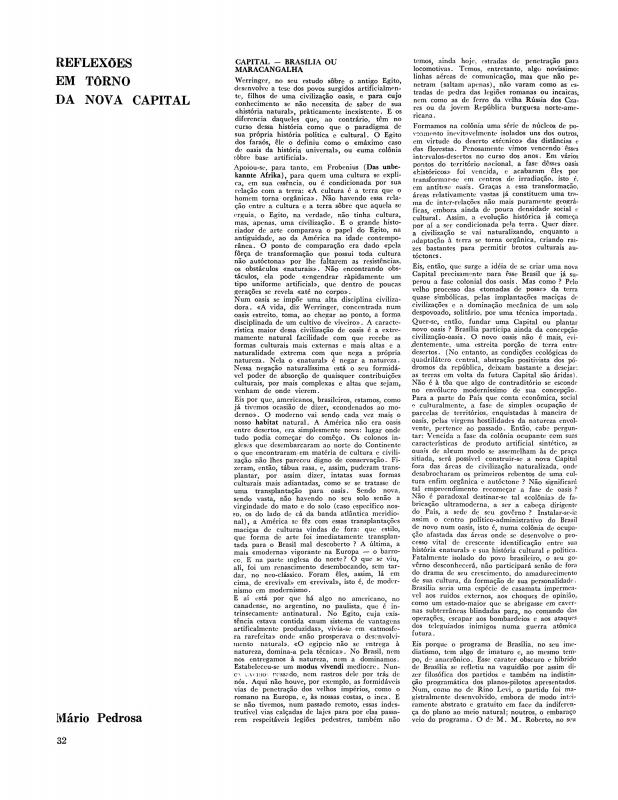This text is the second part of the article in which critic Mário Pedrosa discusses the statements by architect Oscar Niemeyer (1907–2012) [see in the ICAA digital archive the first part, entitled “Depoimento = Testimony” (doc. no. 1110334)]. While the author, Mário Pedrosa, expresses his reservations about the “formal virtuosity” of Niemeyer’s work, he recognizes his genius and appears captivated, at the time this text was written, by the aesthetic power of Brasilia if viewed as a field of experimentation for the integration of the arts. The architect’s self-criticism sparks such enthusiasm in Pedrosa that he comes to believe in the possibility of balance between form, function, and social consciousness, that is, between ethics and aesthetics.
[For further reading, see other essays by Pedrosa: “Niemeyer e crítica de arte” (doc. no. 1086699), “L’architecture moderne au Brésil” (doc. no. 1086489), “A cidade nova, síntese das artes” (doc. no. 1086503), “Espaço e arquitetura” (doc. no. 1087020), “Introdução à arquitetura brasileira – I; Introdução à arquitetura brasileira – II” (doc. no. 1086620), “Introdução ao tema inaugural: A cidade nova, obra de arte” (doc. no. 1110409), “MAM: reconstrução” (doc. no. 1111078), “Parecer sôbre o ‘CORE’ da Cidade Universitária” (doc. no. 1110830), and “Reflexões em torno da nova capital” (doc. no. 1086728)].
Intellectual and politician Mário Pedrosa (1900–81) was unquestionably the pivotal figure in 20th-century Brazilian art theory and criticism. He began as an international politics correspondent for the Diário da Noite. He joined the Brazilian Communist Party (PCB) in the 1920s, and in 1932 he was arrested for his political activism as a Trotskyite. During the Estado Novo under Getúlio Vargas, Pedrosa lived in exile in France and New York, returning to Brazil after World War II. A contributor to Correio da Manhã, he later founded the weekly Vanguarda Socialista due to his anti-Stalinist position. For his doctoral thesis in aesthetics, entitled “Da natureza afetiva da forma na obra de arte” (1949), presented at the Faculdade de Arquitetura (Rio), he made use of his background in philosophy and Gestalt psychology. He was one of the founders of International Association of Art Critics (AICA) (1948) and he helped organize the International Congress of Art Critics (Brasilia, 1959). From 1950 to 1954, he wrote a column on art for Tribuna da Imprensa and, in that decade, he was a member of the organizing committee for the 2nd and 3rd editions of the São Paulo Biennial (1953 and 1955 respectively) before becoming the director of MAM-SP from 1961 to 1963. He was the Secretary of the National Council of Culture during Jânio Quadros’s brief term as president. During the military dictatorship in Brazil, he sought exile in Chile where he directed the Museo de la Solidaridad in Santiago. After the coup under Pinochet (1973), he went to Havana where he was the secretary of the Museo de la Resistencia Salvador Allende. He did not return to Brazil until 1977, at the beginning of the amnesty. In 1980, he was the first person to sign the manifesto founding the Partido dos Trabalhadores (PT). Part of his vast library (some eight thousand volumes) is available at the Biblioteca Nacional in Rio de Janeiro.

